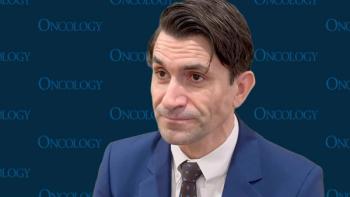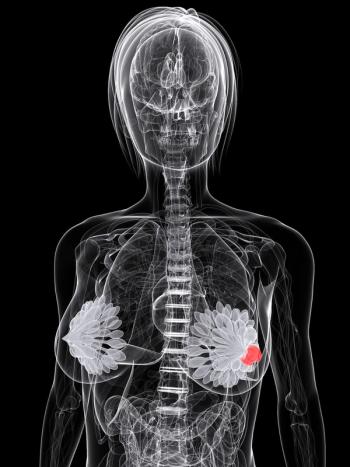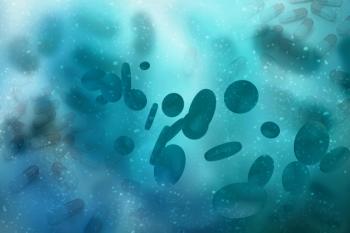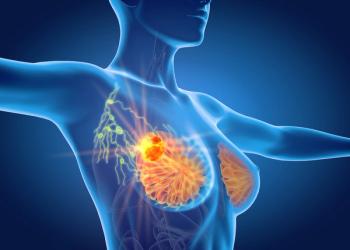
Allo-HCT From Younger Matched Unrelated Donors Yields High DFS, Low Recurrence in MDS
Patients who underwent allogeneic hematopoietic cell transplantation using younger matched unrelated donors had a better disease-free survival compared who those who used older matched sibling donors.
Patients with myelodysplastic syndrome receiving allogeneic hematopoietic cell transplantation (allo-HCT) had a higher disease-free survival (DFS) and lower recurrence with a younger matched unrelated donors (MUD) compared with older matched sibling donors (MSD), according to a study published in JAMA Oncology.
When comparing MUDs and MSDs in the multivariate analysis, DFS was lower with older MSDs (HR, 1.17; 95% CI, 1.02-1.34; P = .02) compared with the overall survival (OS) in younger MUDs not being statistically significant (HR, 1.13; 95% CI, 0.98-1.29; P = .07). A significantly higher relapse was also seen in those who received a transplant from an older MSD (HR, 1.62; 95% CI, 1.32-1.97; P <.001), as well as a lower non-relapse mortality (HR, 0.76; 95% CI, 0.59-0.96; P = .02), acute graft-vs-host disease (GVHD; HR, 0.52; 95% CI, 0.42-0.65; P <.001), chronic GVHD (HR, 0.77; 95% CI, 0.64-0.92; P = .005), and GVHD-free relapse-free survival 12 months after transplantation (HR, 1.42; 95% CI, 1.02-1.98; P = .04).
A total of 1761 patients were enrolled in this study, 1162 of whom were male. In the MSD cohort, the average age was 64.9 years and 646 underwent allo-HCT. In the MUD cohort, the average age was 66.5 years, and 1115 patients underwent allo-HCT. Patients in the MUD cohort had a longer interval from diagnosis to transplant at 8.4 months vs 7.3 months in the MSD cohort (P = .02), as well as a higher percentage of bone marrow grafts (10.0% vs 2.0%; P = .02), a lower percentage of female donor to male recipient pairs (12.0% vs 31.0%; P <.001), higher ABO blood type mismatch rate (48.0% vs 32.0%; P <.001), and higher antithymocyte globulin and alemtuzumab use (37.0% vs 14.0%; P <.001) in both cohorts, respectively.
In the MSD cohort, the median follow-up was 48.1 months and 46.0 months in the MUD cohort.
The univariate analysis showed the 5-year DFS rate was significantly higher in patients who underwent allo-HCT in the MUD cohort at 30.6% (95% CI, 27.4%-33.8%) vs 24.9% in the MSD cohort (95% CI, 21.1%-28.9%; P = .01).In the univariate analysis, the 5-year OS rate was 37.1% (95% CI, 33.6%-40.6%) in the MUD cohort and 33.9% (95% CI, 29.6%-38.4%) in the MSD cohort (P = .19).
Patients utilizing younger MUDs, had a cumulative incidence of relapse at 5 years of 37.3% (95% CI, 34.3%-40.3%) compared with older MSDs at 49.6% (95% CI, 45.5%-53.7%; P <.001). Factors such as age, use of antithymocyte globulin and alemtuzumab, International Prognostic Scoring System score, and time between diagnosis and transplant were associated with relapse.
Non-relapse mortality at 5-years in the univariate analysis was 32.2% (95% CI, 29.0%-35.4%) in the MUD cohort and 25.5% (95% CI, 21.8%-29.4%) in the MSD cohort (P = .002). The multivariate analysis also showed a lower risk of non-relapse mortality in the MSD cohort (HR, 0.76; 95% CI, 0.59-0.96; P = .02).
The 1-year cumulative incidence of grade 2 to 4 GVHD was 39.3% (95% CI, 35.5%-43.1%) and 48.3% (95% CI, 45.4%-51.3%) in the MUD cohort (P = .001). The 1-year incidence of grade 3/4 GVHD was 17.2% (95% CI, 14.4%-20.3%) in the MSD cohort and 20.0% (95% CI, 17.7%-22.4%) in the MUD cohort (P = .14). At 5 years, the incidence of chronic GVHD was 49.0% (95% CI, 44.9%-53.0%) in the MSD cohort and 53.9% (95% CI, 50.7%-57.1%) in the MUD cohort (P = .08).
Reference
Guru Murthy GS, Kim S, Hu ZH, et al. Relapse and disease-free survival in patients with myelodysplastic syndrome undergoing allogeneic hematopoietic cell transplantation using older matched sibling donors vs younger matched unrelated donors. JAMA Oncol. Published Online January 13, 2022. doi:10.1001/jamaoncol.2021.6846
Newsletter
Stay up to date on recent advances in the multidisciplinary approach to cancer.
















































































